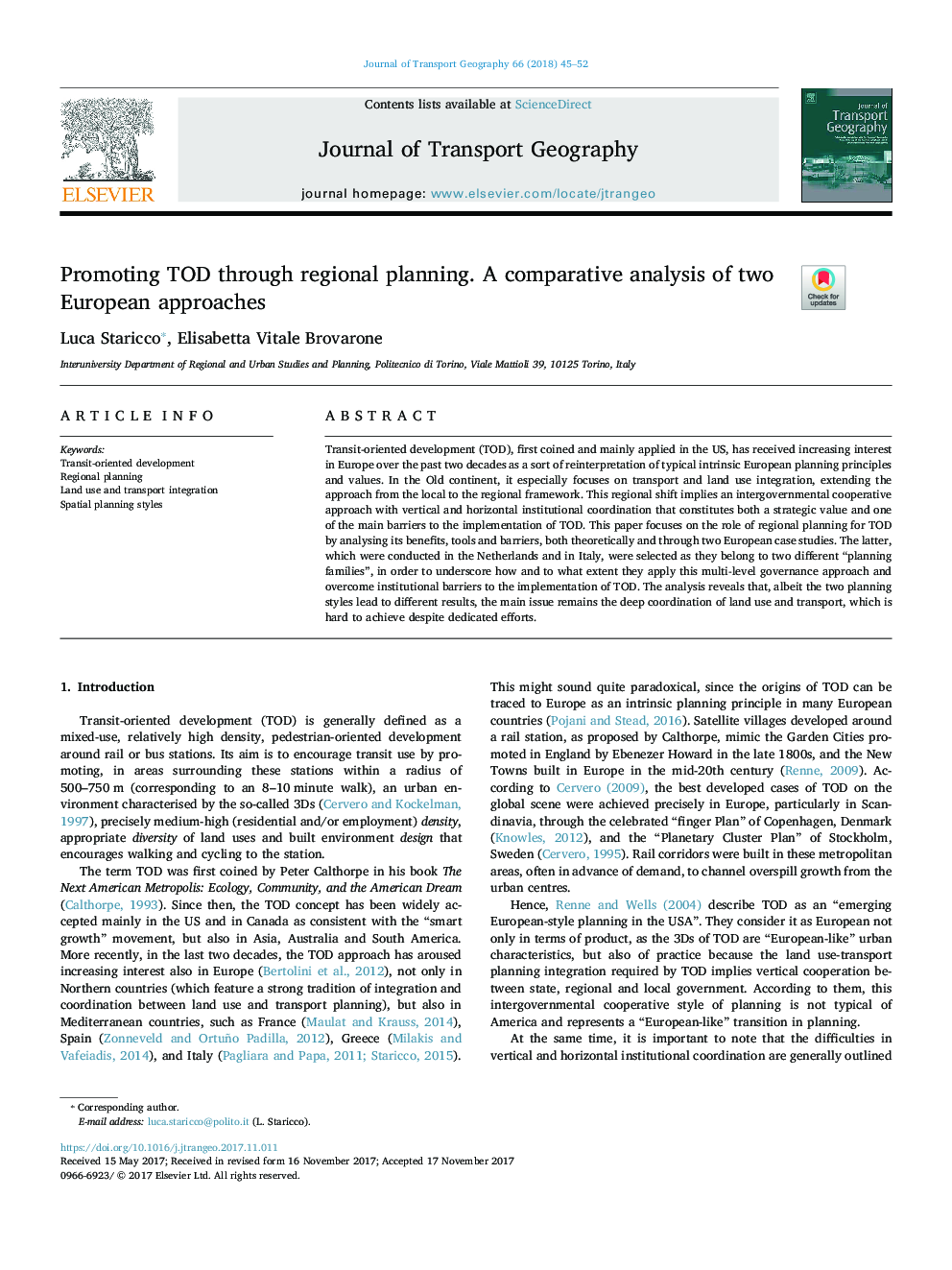| Article ID | Journal | Published Year | Pages | File Type |
|---|---|---|---|---|
| 7485156 | Journal of Transport Geography | 2018 | 8 Pages |
Abstract
Transit-oriented development (TOD), first coined and mainly applied in the US, has received increasing interest in Europe over the past two decades as a sort of reinterpretation of typical intrinsic European planning principles and values. In the Old continent, it especially focuses on transport and land use integration, extending the approach from the local to the regional framework. This regional shift implies an intergovernmental cooperative approach with vertical and horizontal institutional coordination that constitutes both a strategic value and one of the main barriers to the implementation of TOD. This paper focuses on the role of regional planning for TOD by analysing its benefits, tools and barriers, both theoretically and through two European case studies. The latter, which were conducted in the Netherlands and in Italy, were selected as they belong to two different “planning families”, in order to underscore how and to what extent they apply this multi-level governance approach and overcome institutional barriers to the implementation of TOD. The analysis reveals that, albeit the two planning styles lead to different results, the main issue remains the deep coordination of land use and transport, which is hard to achieve despite dedicated efforts.
Related Topics
Life Sciences
Environmental Science
Environmental Science (General)
Authors
Luca Staricco, Elisabetta Vitale Brovarone,
